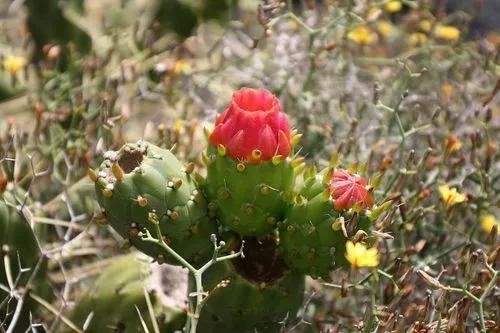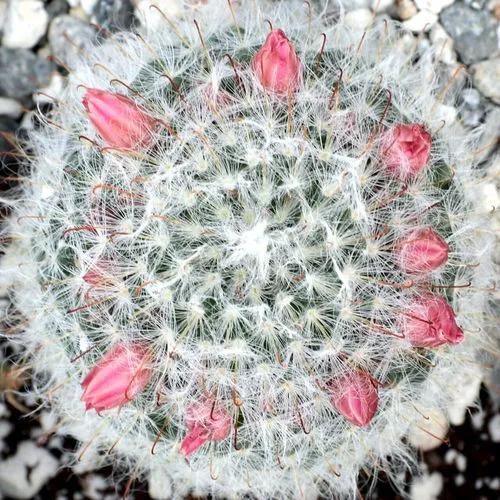Your cacti collection will not be complete without this dwarf cactus that just likes being around and looking cute. It is the smallest of the Ceroid cacti family, and, with enough patience and proper conditions, Pygmaeocereus bieblii blooms with a charming white flower at night. This is a slow-growing plant, so if you get attached to small plants, this one is here to stay small forever.
Pygmaeocereus bieblii Care
Pygmaeocereus bylesianus



Originally from Peru, Pygmaeocereus bieblii belongs to the Cactaceae family, in which most of its species grow almost taller than an average human. Pygmaeocereus bieblii, however, rarely gets taller than 6 inch (15 cm). At maturity, it grows in a columnar shape but keeps its globular shape for the first years. The thorns that this cactus grows are small, white ones that resemble bristles more than thorns, which makes them very special amongst cacti collectors. When blooming, the flower of this plant exceeds the plant’s diameter and produces a sweet, intense fragrance.
How to Care for the Plant

Water

Pygmaeocereus bieblii does not need too much water. Let the soil dry completely before watering again and keep it dry during wintertime as the plant goes dormant. It thrives in drought conditions, and overwatering is the sure way to kill it.

Pruning

Pygmaeocereus bieblii is not a plant that requires pruning. You can help it absorb more nutrients by cutting the flower once it starts to fade, but other than that, you can just let your cactus live without scissors action.

Fertilizer

Use a special fertilizer designed for succulents or cacti. You will not have to use too much of it, as this cactus only really needs fertilization once a month during the growth period in order to boost its blooming.

Sunlight

Keep the sunny window spots available for Pygmaeocereus bieblii, as this plant loves being in the sun. Get as much sun as possible on it year-round, but make sure you don’t keep it in direct sunlight during hot summer days, as the direct sun might burn the plant. Don’t put the plant in the shade, as it will fail to grow or bloom.

Soil

The habitat of this plant is rocky soils and sandy dunes, so you would want to replicate this type of soil for the plant to thrive. You can use pre-mix cactus soil or make your sandy mix at home.

Propagation

You can propagate this cactus by using more methods. Firstly, you can use the seeds from the red fruits that Pygmaeocereus bieblii produces. Then the second method is division. Cut the lateral branches of the cactus, plant them in soil, and they will shortly start to develop roots. After this first step, you can plant the new plant in its new, deeper container.

Temperature

The plant thrives in temperatures of 68-95°F (20-35°C) and will not survive if exposed to longer periods of frost. If you know the plant will be at temperatures of around 41 F° (5 °C), keep the soil dry and don’t water it until you move it to warmer temperatures. Humidity levels must be low, so keep it away from bathroom or kitchen spaces.

Container

First, use a deep container with drainage holes, as this cactus, or cacti generally, doesn’t like having moist soil. You will need many containers until the plant reaches maturity, as it needs repotting once you see it outgrowing its container or doubling in size. Always go only one size up, and don’t change its pot more than once a year. In its first years, this plant requires yearly repotting; then, you can extend the periods to two to two-three years.

Fun fact

Pygmaeocereus bieblii can become invisible! Well, not quite completely, but it shrinks down to a size almost invisible to notice in its natural habitat, where it is exposed to long periods of drought. During the rainfall season, they grow back to their normal shape.

Popularity

2 people already have this plant 6 people have added this plant to their wishlists

Common pests

The most common pests found in Pygmaeocereus bieblii are spider mites and aphids. If it turns yellow, you will most likely find aphids in the soft part. Red then yellow leaves mean aphids' presence. Both can be swept away with special insecticides. Make sure you keep the plant's spot has proper ventilation and avoid overwatering to prevent pests and disease.

Frequent diseases


Botanist’s tips

Discover more plants with the list below
Popular articles






